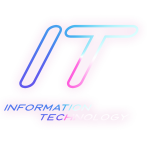Multi-Script Handwritten Character Recognition using Feature Descriptors and Machine Learning
Dissertation: Multi-Script Handwritten Character Recognition using Feature Descriptors and Machine Learning
Promotor: Prof.dr L.R.B. Lambert Schomaker
Supervisor: Dr. M.A. Marco Wiering
There exists no generic method for recognizing handwritten scripts from different writing systems, cultures or historical periods. Asian scripts pose a number of interesting fundamental problems at the levels of image processing, text segmentation, feature extraction, shape classification and language modeling. Instead of spending human efforts at each of these level, the current challenge is to exploit machine learning methods. The main objective of the project is to automatically recognize handwritten Thai and to automatically convert documents written in Thai to text files.

Abstract
Handwritten character recognition plays an important role in transforming raw visual image data obtained from handwritten documents using for example scanners to a format which is understandable by a computer. It is an important application in the field of pattern recognition, machine learning and artificial intelligence. There are already different handwritten character recognition systems that have been designed for commercial purposes, such as mail sorting and bank cheque processing. Furthermore, this type of research can help to search through different historical handwritten manuscript collections. In this way the cumulative historical information can become accessible to a wide public.
In this PhD research, several methods are proposed to deal with several challenges that occur when trying to recognize handwritten characters from multiple language scripts. The thesis contributes to all levels of processing isolated character images: from intensity normalization to segmentation, and from feature extraction to the final classification. Moreover, solutions are proposed for recognizing isolated handwritten character images when not very many handwritten character examples are available.
The main goal of the research presented in this dissertation is to study robust feature extraction techniques and machine learning techniques for handwritten character recognition. The best techniques are the combination of the histogram of oriented gradients with bags of visual words. Furthermore, a new method for line segmentation is proposed, which is a part of document layout analysis. The novel techniques have been tested on many different scripts and the results show that they effectively address the problems of line segmentation and character recognition.

Propositions
- The goal in multi-script handwritten character recognition is to achieve a high recognition performance on isolated handwritten characters from different scripts. – Chapter 1, this PhD thesis –
- If a number of appropriate cost functions have been designed, the original A* path-planning algorithm can move through overlapping or connected text areas instead of moving around. – Chapter 2, this PhD thesis –
- Outputs of different classifiers can be combined and classified by the unweighted majority vote method, which results in high accuracies on isolated handwritten character datasets. – Chapter 3, this PhD thesis –
- In our isolated handwritten character datasets, the best feature descriptors achieve high recognition performances on challenging handwritten datasets with a simple classifier. – Chapter 4, this PhD thesis –
- Some feature extraction methods are able to capture the necessary information from the character images, which makes them important for a recognition algorithm. – Chapter 4, this PhD thesis –
- The combination of local feature descriptors and the bags of visual words approach gives the highest recognition performances. – Chapter 5, this PhD thesis –
University of Groningen, September 2016
Defended on September 23, 2016 in Groningen, the Netherland
ISBN: 978-90-36-9149-5 (printed) / 978-90-367-9149-6 (electronic)
